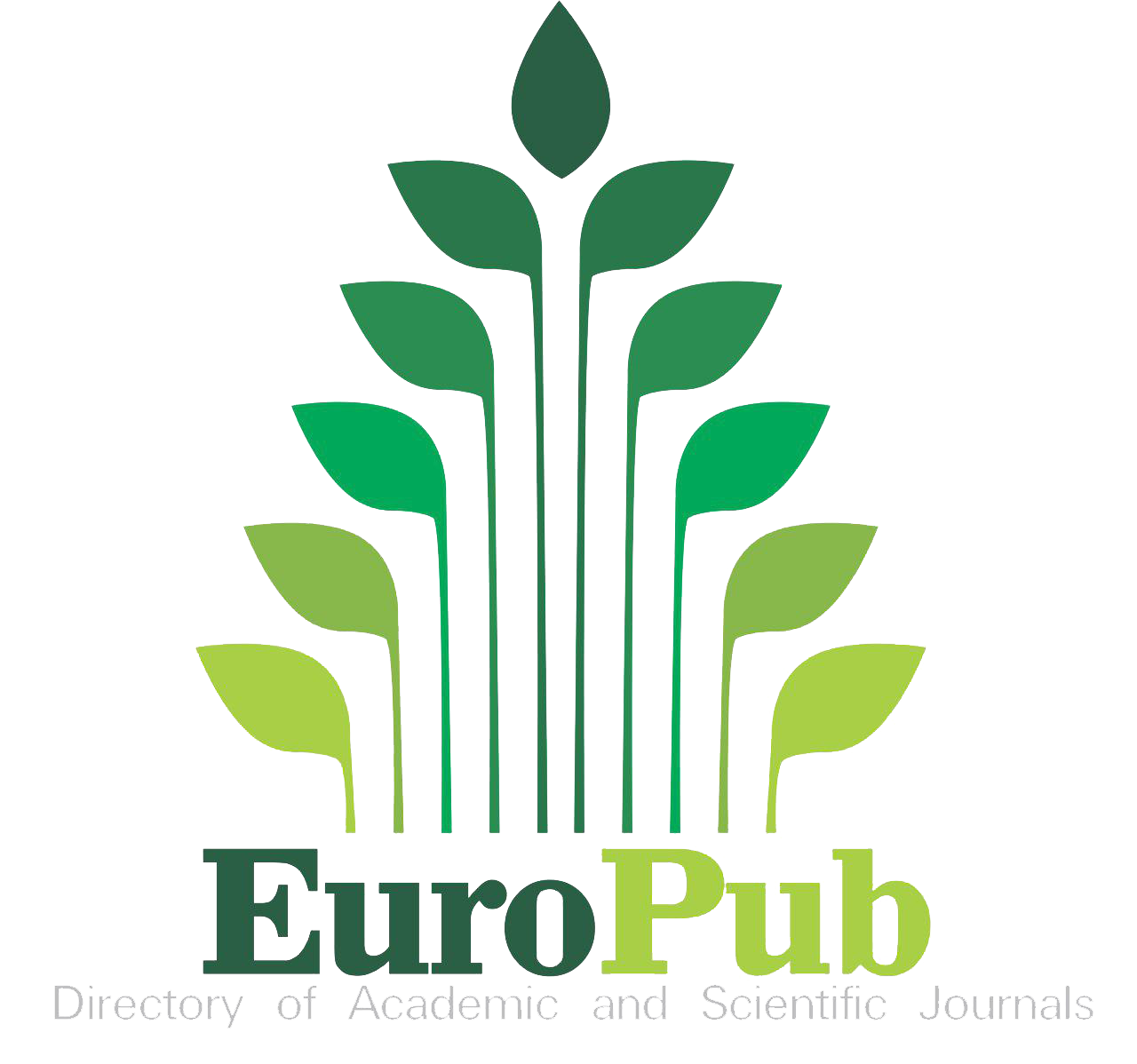Insight into the role of microRNAs in reactive oxygen species activity
miRNAs and ROS interaction
DOI:
https://doi.org/10.5281/zenodo.10444606Keywords:
Reactive oxygen species, oxidative stress, microRNA, oxidative damage, primary microRNAAbstract
MicroRNAs (miRNAs) are non-coding RNAs and have a pivotal role in a range of mechanisms related to physiological and pathological conditions in humans. Reactive oxygen species (ROS) are unstable molecules derived from oxygen ions and initially produced during mitochondrial oxidative phosphorylation. These levels are tightly related to several diseases, such as cancer pathogenesis, neurodegenerative, cardiovascular, inflammatory, and apoptosis-related diseases. In recent years, ROS-related specific miRNA expression levels have gained attraction in the fields of pathology, molecular biology, physiology, pharmacology, and tissue engineering. Interestingly, both increases and decreases in miRNA expression have dual effects on ROS production. Variable changes occur during a ROS-related disease in the expression levels of miRNAs. The main point is the clarification of whether the increase or decrease of the related miRNAs has a suppressive, scavenger, or therapeutic effect on ROS. There is still a lack of substantial evidence about the relationship between ROS. Here we summarized the relationship between ROS production and miRNAs from a narrative perspective.
References
Budakoti M, Panwar AS, Molpa D, et al. Micro-RNA: The darkhorse of cancer. Cell Signal. 2021;83:109995. doi:10.1016/J.CELLSIG.2021.109995
Kozomara A, Birgaoanu M, Griffiths-Jones S. miRBase: from microRNA sequences to function. Nucleic Acids Res. 2019;47(D1):D155-D162. doi:10.1093/NAR/GKY1141
Pradyuth S, Rapalli VK, Gorantla S, Waghule T, Dubey SK, Singhvi G. Insightful exploring of microRNAs in psoriasis and its targeted topical delivery. Dermatol Ther. 2020;33(6):e14221. doi:10.1111/DTH.14221
MacFarlane LA, Murphy PR. MicroRNA: Biogenesis, Function and Role in Cancer. Curr Genomics. 2010;11(7):537. doi:10.2174/138920210793175895
Perron MP, Provost P. Protein interactions and complexes in human microRNA biogenesis and function. Front Biosci. 2008;13(7):2537. doi:10.2741/2865
Bartel DP. MicroRNAs: genomics, biogenesis, mechanism, and function. Cell. 2004;116(2):281-297. doi: 10.1016/s0092-8674(04)00045-5.
Shang R, Lee S, Senavirathne G, Lai EC. microRNAs in action: biogenesis, function and regulation. Nature Reviews Genetics. 2023;24(12):816-833. doi:10.1038/s41576-023-00611-y
Le TNY, Le CT, Nguyen TA. Pri-miRNA cleavage assays for the Microprocessor complex. Methods Enzymol. 2023;692:217-230. doi:10.1016/BS.MIE.2023.02.022
Nhung Nguyen TP, Kumar M, Fedele E, Bonanno G, Bonifacino T. Microrna alteration, application as biomarkers, and therapeutic approaches in neurodegenerative diseases. International Journal of Molecular Sciences. 2022;23(9):4718. doi:10.3390/IJMS23094718
Babu KR, Tay Y. The yin-yang regulation of reactive oxygen species and microRNAs in cancer. International Journal of Molecular Sciences. 2019;20(21):5335. doi:10.3390/IJMS20215335
Ulker OC, Panieri E, Suzen S, Jaganjac M, Zarkovic N, Saso L. Short overview on the relevance of microRNA–reactive oxygen species (ROS) interactions and lipid peroxidation for modulation of oxidative stress-mediated signalling pathways in cancer treatment. Journal of Pharmacy and Pharmacology. 2022;74(4):503-515. doi:10.1093/JPP/RGAB045
Lu TX, Rothenberg ME. MicroRNA. Journal of Allergy and Clinical Immunology. 2018;141(4):1202-1207. doi:10.1016/J.JACI.2017.08.034
Diener C, Keller A, Meese E. Emerging concepts of miRNA therapeutics: from cells to clinic. Trends in Genetics. 2022;38(6):613-626. doi:10.1016/J.TIG.2022.02.006
Tauffenberger A, Magistretti PJ. Reactive oxygen species: Beyond their reactive behavior. Neurochemical Research. 2021;46(1):77-87. doi:10.1007/S11064-020-03208-7
Checa J, Aran JM. Reactive Oxygen species: Drivers of physiological and pathological processes. J Inflamm Res. 2020;13:1057. doi:10.2147/JIR.S275595
Jomova K, Raptova R, Alomar SY, et al. Reactive oxygen species, toxicity, oxidative stress, and antioxidants: Chronic diseases and aging. Archives of Toxicology. 2023;97(10):2499-2574. doi:10.1007/S00204-023-03562-9
Sies H, Belousov V V., Chandel NS, et al. Defining roles of specific reactive oxygen species (ROS) in cell biology and physiology. Nature Reviews Molecular Cell Biology. 2022;23(7):499-515. doi:10.1038/s41580-022-00456-z
Gong YY, Luo JY, Wang L, Huang Y. MicroRNAs Regulating Reactive oxygen species in cardiovascular diseases. Antioxid Redox Signal. 2018;29(11):1092-1107. doi:10.1089/ARS.2017.7328
Konovalova J, Gerasymchuk D, Parkkinen I, Chmielarz P, Domanskyi A. Interplay between MicroRNAs and oxidative stress in neurodegenerative diseases. Int J Mol Sci. 2019;20(23). doi:10.3390/IJMS20236055
Babu KR, Tay Y. The Yin-Yang Regulation of reactive Oxygen species and microRNAs in cancer. International Journal of Molecular Sciences. 2019;20(21):5335. doi:10.3390/IJMS20215335
Kayabaş M. Experimental traumatic brain injury models in rats. Rats, 2023;1(1):15–19. doi:10.5281/zenodo.8143363
Shi Q, Gibson GE. Up-regulation of the mitochondrial malate dehydrogenase by oxidative stress is mediated by miR-743a. J Neurochem. 2011;118(3):440. doi:10.1111/J.1471-4159.2011.07333.X
Aschrafi A, Kar AN, Natera-Naranjo O, MacGibeny MA, Gioio AE, Kaplan BB. MicroRNA-338 regulates the axonal expression of multiple nuclear-encoded mitochondrial mRNAs encoding subunits of the oxidative phosphorylation machinery. Cell Mol Life Sci. 2012;69(23):4017-4027. doi:10.1007/S00018-012-1064-8
Chan YC, Banerjee J, Choi SY, Sen CK. miR-210: The Master Hypoxamir. Microcirculation. 2012;19(3):215-223. doi:10.1111/J.1549-8719.2011.00154.X
Gelen V. An overview of some ischemia/reperfusion models created in rats and the application procedure of these models. Rats, 2023;1(1):1–5. doi:10.5281/zenodo.8142943
Varga Z V., Kupai K, Szucs G, et al. MicroRNA-25-dependent up-regulation of NADPH oxidase 4 (NOX4) mediates hypercholesterolemia-induced oxidative/nitrative stress and subsequent dysfunction in the heart. J Mol Cell Cardiol. 2013;62:111-121. doi:10.1016/J.YJMCC.2013.05.009
Alwazeer D. Recent knowledge of hydrogen therapy: Cases of rat. Rats, 2023;1(1):11-13. doi:10.5281/zenodo.8143351
Li R, Yan G, Li Q, et al. MicroRNA-145 Protects cardiomyocytes against hydrogen peroxide (H2O2)-induced apoptosis through targeting the mitochondria apoptotic pathway. PLoS One. 2012;7(9). doi:10.1371/JOURNAL.PONE.0044907
He HC, Zhu JG, Chen X Bin, et al. MicroRNA-23b downregulates peroxiredoxin III in human prostate cancer. FEBS Lett. 2012;586(16):2451-2458. doi:10.1016/J.FEBSLET.2012.06.003
Downloads
Published
How to Cite
Issue
Section
License
Copyright (c) 2023 Rats

This work is licensed under a Creative Commons Attribution 4.0 International License.


















